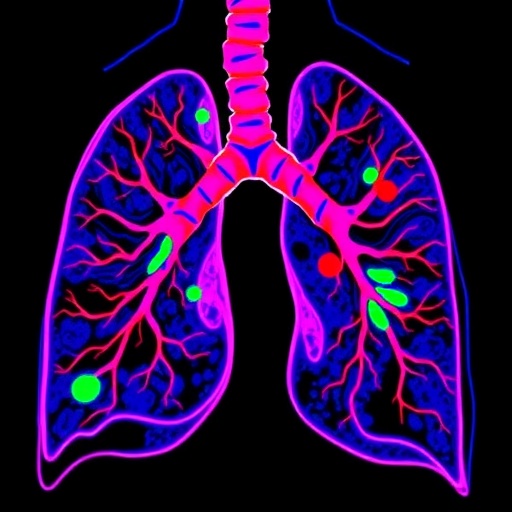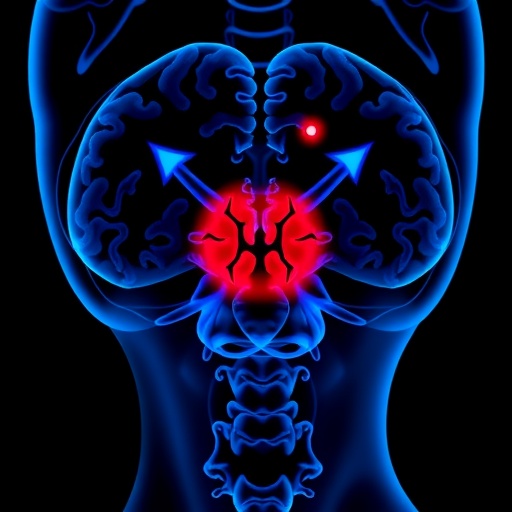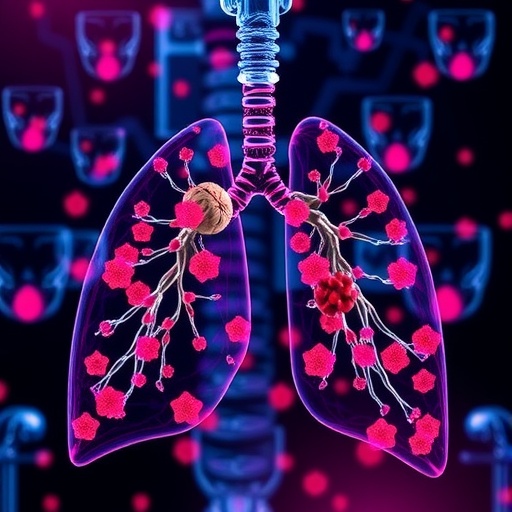Philadelphia, August 5, 2025 – A groundbreaking study published in The American Journal of Pathology unveils the pivotal role of perilipin 2, a lipid droplet-associated protein, in driving the progression of lung adenocarcinoma, the most prevalent subtype of lung cancer worldwide. Researchers have identified that perilipin 2 profoundly impacts tumor aggressiveness by modulating lipid metabolism within cancer cells, orchestrating the accumulation of lipid droplets that act as crucial energy reserves fueling tumor growth and metastasis. This discovery not only elucidates previously enigmatic molecular mechanisms underlying lung adenocarcinoma progression but also opens promising avenues for novel, lipid-targeted therapeutic strategies.
Understanding the biological underpinnings of lung adenocarcinoma remains a critical challenge given its high global morbidity and mortality and often limited responsiveness to existing targeted treatments. The present investigation involved an integrative analysis combining histopathological examination with cutting-edge molecular techniques to probe perilipin 2’s function in cancer biology. Specifically, perilipin 2, a member of the perilipin family of proteins known to coat lipid droplets, facilitates lipid storage and regulates fatty acid metabolism, processes hypothesized to sustain the energetic and biosynthetic demands of rapidly proliferating cancer cells.
The study analyzed a comprehensive cohort comprising 214 resected lung adenocarcinoma specimens collected from patients treated between 2010 and 2016 at Teikyo University Hospital in Tokyo, Japan. Among these samples, 65 tumors exhibited high perilipin 2 expression, while 149 were negative or low expressors. Intriguingly, tumors positive for perilipin 2 displayed histopathological features of poor differentiation, a hallmark associated with aggressive phenotypes and unfavorable clinical outcomes.
.adsslot_8O5U4MbCKT{width:728px !important;height:90px !important;}
@media(max-width:1199px){ .adsslot_8O5U4MbCKT{width:468px !important;height:60px !important;}
}
@media(max-width:767px){ .adsslot_8O5U4MbCKT{width:320px !important;height:50px !important;}
}
ADVERTISEMENT
Delving deeper into clinical correlations, the data revealed that patients harboring perilipin 2-positive tumors experienced significantly shorter recurrence-free survival compared to those with perilipin 2-negative malignancies. This prognostic association underscores perilipin 2’s potential as a biomarker for risk stratification in lung adenocarcinoma, enabling more precise predictions of disease course and aiding clinical decision-making regarding surveillance and adjuvant therapy.
To clarify the mechanistic role of perilipin 2 in tumor biology, the research team conducted functional assays using lung adenocarcinoma cell lines with targeted knockout of the PLIN2 gene. The absence of perilipin 2 led to a marked decrease in intracellular lipid droplet accumulation. This reduction in lipid storage was accompanied by a significant suppression of malignant cellular behaviors, including proliferative capacity and migratory potential, indicating that perilipin 2 supports tumor growth and dissemination by maintaining essential lipid reserves.
These observations suggest a model wherein perilipin 2 preserves lipid droplet integrity, thereby allowing cancer cells to harness stored lipids as metabolic substrates during energy-intensive processes such as proliferation, invasion, and adaptation to the tumor microenvironment. Lipid droplets, traditionally regarded as inert fat depots, have emerged as dynamic organelles intricately linked to cancer metabolism, supporting anabolic growth and oxidative stress resistance.
Professor Kana Miyata-Morita, the lead investigator from the Department of Clinical Laboratory Science at Teikyo University, emphasizes the clinical significance of these findings: “Lipid metabolism represents a vulnerable node in cancer biology. By elucidating the function of perilipin 2 in lipid droplet homeostasis and tumor progression, we highlight a promising target that could transform current therapeutic paradigms, especially for patients who lack driver mutations amenable to existing targeted therapies.”
The tumor microenvironment, a complex niche composed of stromal, immune, and endothelial cells, also interacts with lipid metabolic pathways, further complicating tumor progression. Perilipin 2-related modulation of lipid availability may influence immune cell function and stromal remodeling, potentiating a pro-tumorigenic milieu. Future studies are warranted to dissect these intricate cellular crosstalks and validate perilipin 2 as a multifaceted therapeutic target.
Despite advances in targeted therapies that have improved outcomes in subsets of lung adenocarcinoma patients harboring specific genetic alterations, a substantial fraction remains without effective options. The metabolic dependencies conferred by proteins like perilipin 2 unveil critical vulnerabilities in these tumors. Therapeutic interventions designed to disrupt lipid droplet formation or perilipin 2’s functional interactions could impair the cancer’s metabolic flexibility and suppress tumor progression.
In parallel with translational research efforts, the study employed rigorous histological techniques, including hematoxylin and eosin (H&E) staining and immunohistochemistry, to confirm perilipin 2 localization and intensity in tumor tissues. Additionally, immunofluorescence analyses substantiated the quantitative differences in lipid droplet accumulation between wild-type and PLIN2 knockout cells, reinforcing the validity of the experimental approach.
This work represents a significant advance in the convergence of cancer metabolism and tumor pathology, providing a conceptual framework that integrates lipid droplet biology into the molecular landscape of lung adenocarcinoma. By establishing perilipin 2 not only as a biomarker but also as a driver of malignant phenotypes, the study propels the field toward lipid-centric cancer therapeutics.
The implications extend beyond lung cancer, as perilipin 2 and lipid metabolic reprogramming are relevant in various malignancies characterized by metabolic plasticity. The research underscores the importance of metabolic profiling and personalized approaches that consider tumor bioenergetics, potentially reshaping the future of oncology.
In conclusion, the identification of perilipin 2 as a mediator of lung adenocarcinoma progression elevates our understanding of cancer metabolism’s contribution to disease aggressiveness. This novel insight paves the way for innovative strategies that exploit lipid metabolism vulnerabilities, offering hope for more effective treatments against this devastating disease.
Subject of Research: Cells
Article Title: Perilipin 2 Mediates Progression of Lung Adenocarcinoma by Modulating Lipid Metabolism
News Publication Date: August 5, 2025
Web References: https://doi.org/10.1016/j.ajpath.2025.05.016
References: Miyata-Morita K, et al. The American Journal of Pathology, 2025
Image Credits: The American Journal of Pathology / Miyata-Morita et al.
Keywords: Lung adenocarcinoma, Perilipin 2, Lipid metabolism, Lipid droplets, Cancer progression, Tumor microenvironment, Prognostic biomarker, Metabolic vulnerabilities, Targeted therapy, Cancer biology
Tags: advanced lung cancer researchcancer cell energy reserveshistopathological analysis in oncologylipid droplet accumulationlipid metabolism in cancerlipid-targeted therapeutic strategieslung adenocarcinoma prognosismolecular mechanisms of lung cancernovel cancer therapiesperilipin 2 protein roletargeted treatments for lung adenocarcinomatumor aggressiveness factors





